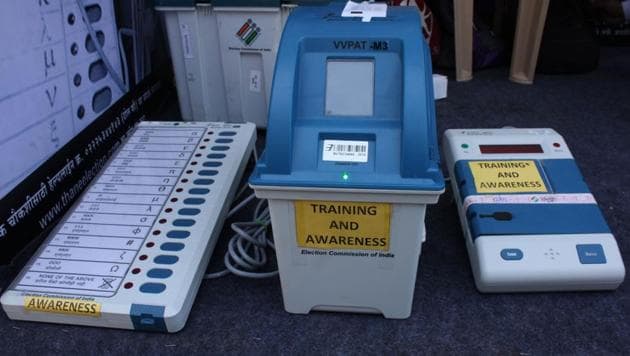‘I have no doubt our EVMs are tamper-proof’
Unlike EVMs used in many other countries, these can neither be networked by wire or by wireless to any other machine or system, nor can they be influenced by signals from computers or mobile phones.
In recent years and months, the credibility of Electronic Voting Machines (EVMs) has been challenged by sections of the political establishment. It has also become a subject of public discussion. In fact, often, the first question I am asked when I speak about elections is whether EVMs are really tamper-proof. Recently, at the Calicut book fair, I decided to ask my audience whether they believed that EVMs could be manipulated. Most hands went up. After my 45-minute lecture, I asked my audience again, whether they still believed that the machines could be rigged. I am happy to say that this time around, fewer hands were raised.

EVMs are manufactured by two highly reputable public sector undertakings, exclusively for the Election Commission of India (ECI). These are standalone machines. Unlike EVMs used in many other countries, these can neither be networked by wire or by wireless to any other machine or system, nor can they be influenced by signals from computers or mobile phones. The software is burnt into a one-time programmable chip which cannot be altered. The source code of the software is not available even to the Election Commission. Further improvements in the latest generation of machines will cause them to shut down upon the slightest attempt to tamper.
In most of the 20-odd countries where EVMs are employed, I have observed that these are often manned by volunteers drawn from the general public. In India, however, the usage of EVMs is tightly controlled by government officials. From the district magistrate down to presiding officers and poll staff, they are all open to government scrutiny and discipline. Moreover, there are detailed manuals, rules and regulations which have to be strictly followed by them. Prior to any election, officials are posted to their respective stations at random, just 24 hours before polling. EVMs, too, are randomised by computer programmes.
Over the years, several courts of law have endorsed the machine’s reliability. The first legal challenge arose in February, 2001, when the late J Jayalalithaa moved the Madras High Court. In its judgment the court observed that the ECI had taken every precaution as a “prudent normal person” might take in this matter and that the “margin of error was negligible.” The contention of the petitioner about failure of EVMs in Japan and United States was held to be inapplicable to India. Another challenge was raised in the Karnataka High Court in 2004. The issue raised was that the EVMs used were vulnerable to “mischief”. The court held that the invention of the EVM was not only a great achievement but indeed a matter of “national pride”. Subsequently, the Bombay High Court (Nagpur bench) dismissed a petition that alleged that machines could be manipulated by “remotely operated devices”, without actual access to either strong room or to the machines. The Bombay High Court dismissed another petition in 2018, as did the Supreme Court as recently as November, 2018.
Soon after I completed the general elections in 2009, tampering was alleged by some quarters. We assembled 100 machines at random and invited people to demonstrate actual tampering, treating the Commission hall as a polling station. Video cameras were positioned to record the proceedings, as evidence admissible in the case then pending in the Delhi High Court. No one was able to tamper with the machines. What finally resulted was the request to have an inbuilt paper trail. That is how the Voter Verifiable Paper Audit Trail (VVPAT) was born. Through a small inbuilt window voters can verify their choice of candidate and party. These add-on machines were used in recent state Assembly elections. They will be comprehensively used in the forthcoming general election. (A second challenge was offered by the ECI in June 2017. Only two political parties showed up and were apparently satisfied.)
To go back to the ballot paper system is in my view a retrograde step. It must be recalled that a major challenge with ballot papers is the resultant number of invalid voters. When an election can be won or lost by a single vote, a large number of invalid votes leads to the filing of many election petitions. EVMs make no such mistake.
My experience has shown that when a party or person wins, they accept the verdict unquestioningly. However, should they lose, they often blame the EVMs. My request is that until such time as incontrovertible proof is accepted by a court of law, our faith in the EVMs must remain undiminished.
Navin B Chawla is former chief election commissioner of India. His book “Every Vote Counts” will be released on January 26, 2019
The views expressed are personal






